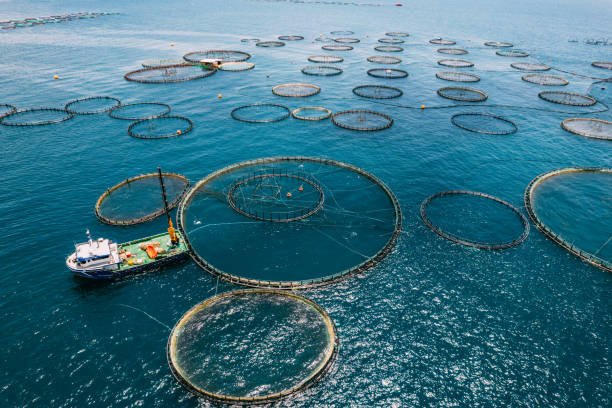The UAE, known for its arid landscapes and limited freshwater resources, is embracing aquaculture as a sustainable solution to meet its growing seafood demands. As global fish stocks face depletion and the need for environmentally friendly food production increases, aquaculture solutions in the UAE are setting new benchmarks for innovation and sustainability.
The Growing Need for Aquaculture in the UAE
Seafood is an integral part of the diet in the UAE, yet overfishing and reliance on imports have created challenges for food security and economic sustainability. With the country’s population increasing and seafood demand rising, the UAE has turned to aquaculture to address these issues.
Aquaculture provides an alternative to traditional fishing by raising fish and other aquatic species in controlled environments. This reduces pressure on wild fish stocks and ensures a consistent, high-quality supply of seafood. By adopting modern aquaculture techniques, the UAE is also contributing to global efforts in sustainable food production.
Benefits of Aquaculture Solutions
1. Food Security
Aquaculture enhances the UAE’s food security by providing a reliable source of locally produced seafood. This reduces dependency on imports and strengthens the country’s ability to withstand global supply chain disruptions.
2. Economic Growth
Investing in aquaculture creates jobs in farming, processing, and distribution. It also supports rural development by offering employment opportunities in areas where traditional agriculture may not be viable.
3. Sustainability
Aquaculture solutions in the UAE prioritize eco-friendly practices, such as water recycling and integrated farming systems. These approaches minimize environmental impact while optimizing resource use.
Incorporating aquaculture solutions UAE has also helped tackle the region’s unique challenges, such as water scarcity and limited arable land, by leveraging advanced technologies and sustainable farming methods.
Innovations Driving Aquaculture in the UAE
1. Recirculating Aquaculture Systems (RAS)
RAS technology recycles water within a closed-loop system, making it ideal for the UAE’s water-scarce environment. These systems allow precise control over farming conditions, ensuring efficient production.
2. Seawater Aquaculture
The UAE’s proximity to the Arabian Gulf enables the use of seawater for aquaculture. Species such as shrimp and grouper are well-suited to this method, reducing reliance on freshwater resources.
3. Aquaponics Integration
Aquaponics combines aquaculture with hydroponics, using fish waste to fertilize plants. This innovative system supports sustainable food production by maximizing resource efficiency and minimizing waste.
Challenges in Implementing Aquaculture Solutions
Despite its potential, aquaculture in the UAE faces several hurdles that require strategic solutions:
1. High Initial Costs
Setting up aquaculture systems, especially those involving advanced technology like RAS, requires significant investment. Collaboration between government and private sectors can help alleviate financial constraints.
2. Water Management
Although innovations like RAS address water scarcity, managing water resources remains a challenge. Continued investment in research and development is essential to optimize water use further.
3. Environmental Impact
Improperly managed fish farms can lead to water pollution and habitat degradation. Strict regulations and adherence to sustainable practices are critical to mitigating these risks.
The Future of Aquaculture in the UAE
The UAE’s commitment to advancing aquaculture is evident in its strategic plans and investments. With a focus on innovation and sustainability, the country is poised to become a leader in aquaculture solutions.
Government initiatives aim to support the industry by offering subsidies, training programs, and research funding. Public-private partnerships are also driving growth, ensuring that aquaculture solutions in the UAE remain at the forefront of global advancements.
Additionally, consumer awareness of sustainable seafood is increasing, further boosting the demand for locally produced aquaculture products. This shift in consumer preference underscores the importance of continued investment in the sector.
Conclusion
Aquaculture solutions in the UAE represent a transformative approach to addressing food security, economic growth, and environmental conservation. By leveraging advanced technologies and sustainable practices, the UAE is not only meeting its seafood needs but also setting an example for other regions. As the aquaculture industry continues to evolve, it holds the potential to redefine food production in a way that benefits both people and the planet.




